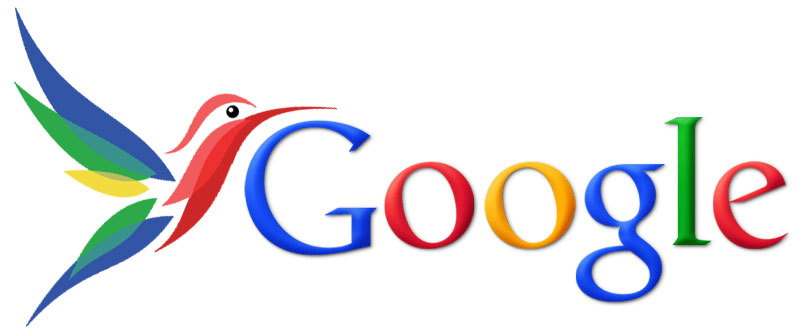5 Strategies That Work Under Google Hummingbird
 Google Hummingbird is now in full swing and we in the SEO community are trying to adapt to it as best we can. In all honesty though, it’s not all that difficult to adapt to the new algorithm as the basics of SEO haven’t changed all that much. You still need to have great content and relevant backlinks in order to rank well with the Google gods.
Google Hummingbird is now in full swing and we in the SEO community are trying to adapt to it as best we can. In all honesty though, it’s not all that difficult to adapt to the new algorithm as the basics of SEO haven’t changed all that much. You still need to have great content and relevant backlinks in order to rank well with the Google gods.
That having been said however, a number of the old “tricks” that some people used under the old system have gone by the wayside. Gone are the days when you could use low quality content and just attract the Google search bot with plenty of keywords. Most link networks have also died an untimely death on the altar of the Hummingbird.
However, after some careful research, I was able to find a number of solid strategies that do work and which will get you plenty of Google love in a post Hummingbird world. Here’s what you need to know in order to do SEO in 2013-2014:
It Starts With Great Content
I know I’m beginning to sound like a broken record (and if you don’t know what that means, ask your parents or someone over 30) but it really does come down to content, content, content. The better the quality of your content, the better your rankings are going to be under Google’s Hummingbird. There is no way to say it any more succinctly than that.
Penguin and Panda were all about weeding out the junk content and the MFA (made for AdSense) websites. The idea was to ensure that the content Google served up to its visitors was relevant and made sense.
We’ve all seen the ridiculous results that sometimes come up under a Google search where the website clearly has nothing worth looking at. Occasionally, we’ve even clicked a link, hoping against hope that it has what we need.
While that does still happen occasionally, especially if the information you need is rather esoteric (I recently found myself trying to find college graduation rates for 25-34 year olds from Poland as ranked by the OECD – never did find the numbers), Hummingbird aims to make that as rare as the old BSOD. By the way, if you don’t know what a BSOD is consider yourself lucky and ask someone over 20 to tell you about the blue screen of death.
Bottom line, if your website has junk to offer, it’s likely to be pushed way, way down in the rankings and disappear from the face of the earth, even if it is still technically in the system. Of course, as we always say here at Quantum SEO Labs, there are two sides to every coin. The flip side of this is that you also need:
Relevant, High PR Backlinks

These need to be preferably from the home page of a relevant website but at the very least, the page that the link comes from needs to have the kind of good quality page rank that makes it a worthwhile link. The classic example I always mention is that Facebook’s home page is one of only a handful of PR10 websites worldwide. That does not mean that a link from a page on Facebook is worth a PR10 link.
In fact, many Facebook links are worthless as far as SEO is concerned because they’re often not indexed by the Google bot. Mind you, that doesn’t mean they’re worthless from a traffic perspective since a link on a popular web page, even if it happens to be a no follow link could still bring plenty of traffic to your site, which is after all what you wanted…
The other thing to remember however is that relevancy is important. In the old days, you could simply plant a few links on any old website with a decent PR and Google’s bots would ensure that the link juice flowed through to your page. Hummingbird (and really Panda/Penguin before it) basically does away with this.
Google’s engineers are not stupid and they know when you are trying to game the system. Thus the system will check whether or not the link that you just created is from a site which is relevant to your webpage. Thus a link on a high PR personal finance website for your company selling plumbing supplies isn’t going to be worth anywhere near as much as it would have been had it been on a website talking about how septic tanks work.
Of course, even the non relevant links are worth something. It’s just that they’re not going to get you the same kind of quality SEO as you would otherwise get from a relevant site.
By the way, please remember that your anchor text matters more than ever under Hummingbird. Pick numerous different kinds of anchor texts include mundane words such as “here” and “link” as well as the actual URL and of course relevant keyword based anchor texts.
Again, Google’s engineers are really smart people and they’ve designed Hummingbird to look for any links that look artificial. Even if you pick a truly awesome keyword as your anchor text, if you have zero links that look natural (most people when they link to your site organically simply put “link,” “click here,” “here” or even the URL itself as opposed to taking the time to create good anchor text), Google’s bot will know that something is up and that your links are pretty much all artificial.
Long Tail Keywords Are In

Another change that’s really not a change is that long tail keywords are more important than ever before. The difference between searching for say the keyword “car insurance” and “cheap car insurance in Florida” is now much more important than ever before.
Previously, Google would use the individual keywords to try to suss out what a user was looking for. Thus Google’s old system was designed to notice words like car insurance and Florida along with cheap and try to find as many matches to those specific keywords as possible. The new Hummingbird system changes this (hopefully) for the better.
Under the new system, instead of relying on individual keywords and trying to find as many as possible within a given piece of material on the web, Google’s engineers have designed the system to use artificial intelligence to actually try to understand the meaning of the whole sentence.
It’s kind of like the Ask Jeeves (now just Ask) search engine was supposed to be a few years back. The idea of Ask Jeeves was that you’d be able to give the system a natural language question and it would be able to provide real world results from its search database. Unfortunately, the concept was a little ahead of its time. Ask Jeeves never really worked right and today, Ask is a distant fifth or sixth in the search engine world.
Google believes however that they’ve cracked the nut and that they can now offer what Ask Jeeves was supposed to offer –something similar to a text based version of Siri. This in turn means that you are infinitely better off trying to do long tail keywords rather than sticking to the short, highly competitive keywords.
Not only are those highly competitive keywords still hard to rank for, but they are also now less likely to get you results because Hummingbird actually tries to look organically at an entire query rather than simply picking out specific keywords and then throwing up whatever seems to match most.
Use Bounce Rates Wisely
Another excellent piece of advice is a Hummingbird world is to look at your bounce rates. However, you need to consider those bounce rates in a fundamentally different way than you have in the past. Most people look at their bounce rates and, if they are high, try to see what people moved on to once they left the page.
People would then try to match up their own pages to those of the pages people bounced to. This strategy might have worked well in the past but in the world of Google Hummingbird, it’s important to look at it organically. Consider that Hummingbird is designed to get people’s exact queries answered as opposed to simply hunting down keywords.
Effectively, this means that (as I keep saying), the old strategy of looking for short keywords is dead. Instead, you need to look for long tail keywords. This also affects how you look at bounce rate. Instead of looking at what people bounced to, look at what made them arrive on your page to begin with. Did you provide them with a relevant answer to the question they asked?
Generally, you’ll find that if you look at bounce rates this way, you can more effectively lower your bounce rate, especially now. That’s because you will be doing Google’s work for them. They are after all trying to provide the most relevant answers that they possibly can provide to the people doing a search on their website.
By honestly asking whether the query that led people to your site matches what you actually have there, you can effectively cut down your bounce rate significantly and actually improve your odds of keeping people longer (and by extension spending money on your site rather than that of the competition).
Remember that just because someone bounced to a different site after yours doesn’t mean that they found the answers they were looking for. By following the old method, you might just be repeating the mistakes of your competition rather than fixing your own site so that you are able to keep more of the kinds of visitors that you want to keep.
Provide a Well Rounded Experience
The final pillar of a good SEO strategy in the post hummingbird world is to actually provide a good, well rounded experience. By that I mean more than simply providing good content, which as I said above is the single most important aspect of doing SEO today. It means looking at your entire website organically in order to provide an overall positive experience. Here’s how this works:
Hummingbird was created first and foremost in an effort to help Google’s customers. Remember that Google doesn’t actually offer webmasters anything at all. Their primary concern is and always has been to get people to visit the Google homepage and click on Google’s ads. They do this by trying to provide the best overall experience that they can possibly provide.
Part of that is more than just finding an appropriate article that their customers can look at. Another aspect of what Google wants to do is provide the overall best address to respond to a customer query. This means that rather than just getting them to the one page on your site that deals with retirement savings strategies, they’d rather send customers to a site that is all about retirement strategies.
Thus it’s no longer enough to optimize an individual page to appeal to Google and your customers. Instead, a part of the new ranking algorithm seems to be where Google actually looks at the entire website and tries to decide if the whole website will provide the best experience it can offer instead of simply looking at an individual page.
Bottom Line
SEO is changing but it’s definitely not dead in the post Hummingbird world. If anything, it’s more important than ever because ranking in Google is going to require taking a smart, organic approach to your SEO campaign. Of course, if you have been trying to find the magic button to push that will flood your site with traffic, you’re probably wasting your time.
In fact, I’m pretty much certain of it. There will always be someone coming up with some idea for a sneaky trick but the people who will last long in this business are the ones who think about the customer first. If you look at what a customer really wants, which is good, high quality content and you make sure it’s easy to find it (i.e. with high PR relevant backlinks), you’ll do great in the Hummingbird world.

